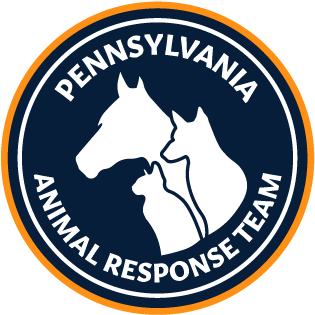While no disaster can be planned for, the Red Cross suggests three steps to become prepared for a disaster:
- Get a Kit
- Make a Plan
- Be Informed
If it’s not safe for you to stay in your home during an emergency, then it is not safe for your animals, either. Make an evacuation plan for your pets, knowing that many hotels and shelters do not accept animal guests. Assemble a kit for your pet or include pet supplies in your own emergency kit, keeping in mind the following supplies:
- Sturdy leashes, harnesses and/or carriers to transport pets safely and ensure that they can’t escape.
- Food, drinking water, bowls, cat litter/pan and a manual can opener if you pet eats canned food.
- Medications and copies of medical records stored in a waterproof container.
- A first aid kit.
- Current photos of you with your pet(s) in case they get lost. Since many pets look alike, this will help to eliminate mistaken identity and confusion.
- Information on feeding schedules, medical conditions, behavior problems, and the name and number of your veterinarian in case you have to foster or board your pets.
- Pet beds and toys, if easily transportable.
More tips for pet preparedness in emergency are available from the Red Cross.

Pet First Aid Kit
Recommended supplies for your pet first aid kit.

Disaster Planning in Animal Facilities
Evacuation, sheltering, and Veterinary Care tips by Butler County Animal Response

Pet Preparedness Guidelines
Helpful hints for being prepared to deal with your pets during an emergency.

Heat Precautions For Your Pet
Tips to keep in mind and signs that your cat or dog has had enough sunshine.
